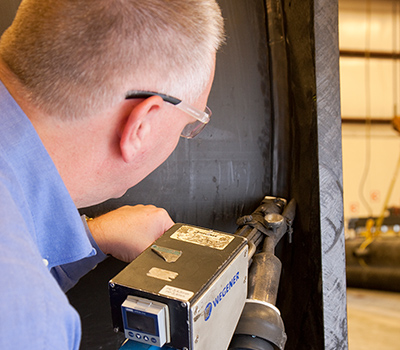SERVICES
Typically, polyethylene pipe and fittings are connected by means of butt fusion, which is done by using a fusion machine that holds the pipe &/or fitting in a stationary position. A facer that has a cutting blade then trims the ends to be mated. A heater plate is positioned between the ends to be connected. The heater is then removed and the ends are brought together and allowed to cool.
By following the manufacturers’ recommendations for butt fusion, the weld becomes as strong as the pipe itself. It is even possible to pull several hundred feet or more of HDPE pipe after it has been butt fused together, since you actually have created a section of monolithic pipe.
Butt fusion creates strong, leak-free HDPE welds when following proper procedures. ISCO A.H. McElroy has hundreds of reliable, easy-to-operate McElroy machines for rent, and for sale. Machines to fuse from ½” to 65” HDPE pipe are readily available; various size and application-specific units noted below:
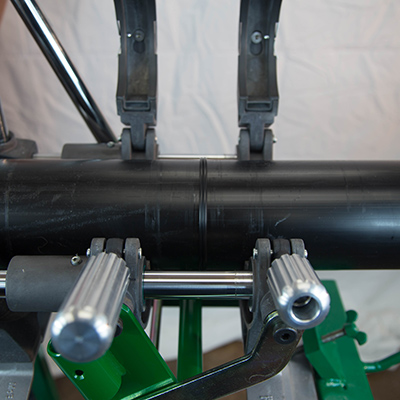
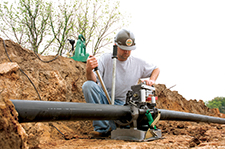
Small Diameter
1/2” - 6”
- Mini Mc (1/2” CTS - 1” IPS)
- 1LC (1/2” CTS - 1”IPS)
- 2LC (1/2” CTS - 2” IPS)
- 2CU (1/2” CTS - 2” IPS)
- Pit Bull 14 (1” IPS - 4” DIPS)
- Pit Bull 26 (2” IPS - 6” DIPS)
- DynaMc 28 (2” IPS - 8” DIPS)
- DynaMc 250 (2” IPS - 8” DIPS)
- DynaMc 412 (4” IPS - 12” DIPS)
- Pit Bull 28 (2” IPS - 8” DIPS)
- Pit Bull 250 (2” IPS - 8” DIPS)
- Pit Bull 412 (4” IPS - 12” DIPS)
- Pit Bull 618 (6” IPS - 18” OD)
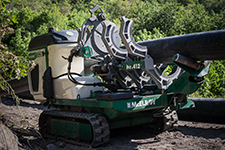
Medium Diameter
6” - 20”
- Rolling 28 (2” IPS - 8” DIPS)
- TracStar 28 (2” IPS - 8” DIPS)
- Rolling 250 (2” IPS - 8” DIPS)
- TracStar 250 (2” IPS - 8” DIPS)
- Rolling 412 (4” IPS - 12” DIPS)
- TracStar 412 (4” IPS - 12” DIPS)
- Rolling 618 (6” IPS - 18” OD)
- TracStar 618 (6” IPS - 18” OD)
- TracStar 500 Series III (6” IPS - 20” OD)
- Rolling 824 (8” IPS - 24” OD)
- TracStar 630 (8” IPS - 24” OD)
- TracStar 900 (12” IPS - 36” OD)
- TracStar 1200 (16” OD - 48” OD)
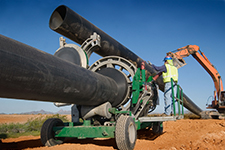
Large Diameter
24” - 48”
- MegaMc 824 (8” IPS - 24” OD)
- MegaMc 1236 (12” IPS - 36” OD
- MegaMc 1648 (16” OD - 48” OD)
- MegaMc 1600 (20” OD - 65”OD)
- MegaMc 2065 (20” OD - 65” OD)
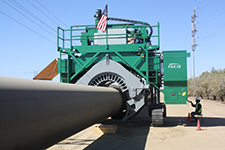
Extra-Large Diameter
52” - 2.5m
- MegaMc 1600 (20” OD - 65”OD)
- MegaMc 2065 (20” OD - 65” OD)
- Talon (54” OD - 78” OD)
Electrofusion is a simple, cost-effective method for joining HDPE pipe. As an alternative to butt fusion, electrofusion is ideal for repairs and difficult connections of HDPE pipe. It has been successfully and cost-effectively used for applications such as pipe bursting, slip lining, dual containment, directional drilling, and manhole connections.
Electrofusion couplings are available in a wide range of sizes. Other fittings available in electrofusion are self-tapping tees, branch saddles, and high-volume tapping tees.
ISCO A.H. McElroy stocks electrofusion processors, including the Highland brand, for sale or lease at multiple ISCO A.H. McElroy locations.

Extrusion welding of HDPE is a typical welding procedure. Before welding begins, the surface of the polyethylene must be ground down, to expose the virgin HDPE. A spark test wire may be placed in the groove; this will be used to later test the quality of the weld. Now the extrusion gun is set in place and it begins to extrude a bead of molten polyethylene. Super-heated air is forced out the nozzle, melting the surface. Molten polyethylene is then forced out of the extruder, where it bonds with the surface. A spark tester is used to test the integrity of the weld seam. The extrusion weld creates a molecular bond between the sections of polyethylene.
